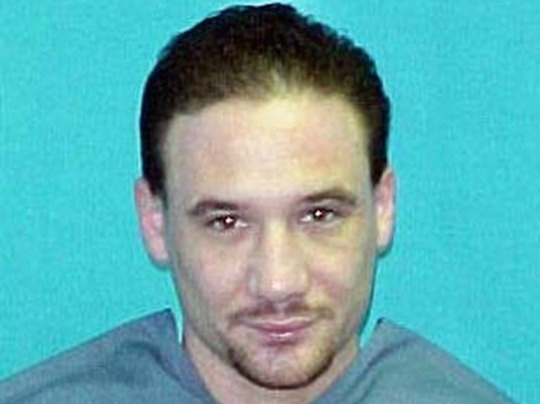Don't wanna be here? Send us removal request.
Text
How to get drugs into 50 prisons? Soak inmates’ mail in heroin, ecstasy and fentanyl

The dealers were sneaking drug-infused paper to prison inmates across the country — disguising the narcotics as legal mail, funeral notices and even Harry Potter coloring books.
At its height, the drug-trafficking organization from South Florida had over 145 inmates in over 50 federal prisons distributing their product, authorities say. Court documents indicate the smuggling network was active for at least three years.
The FBI ultimately came to suspect two South Florida men at the center of the operation: Roy Kahn, 48, and Christopher Adams, 42, both of Plantation. They concluded the network was smuggling a kilo of drugs a week into prisons and simultaneously running a nationwide prostitution ring, according to court documents.
Authorities say they laundered the proceeds from both the drug smuggling and the prostitution through a series of shell companies, at one point depositing over $600,000 in one month in just one account.
As Kahn’s alleged co-conspirators now face trial, he remains on the run, authorities say.
Here’s how the scheme began to unravel.
Suspicious-looking mail
According to court documents, sometime in September 2015, an inmate at a orison in Atwater, California, received a package that supposedly was from his lawyer. Such communication is routinely treated as confidential because of attorney-client privilege.
Something was off about this suspicious-looking package — the criminal complaint doesn’t say what — but it was enough for officials to start investigating. When authorities tested its contents, the results came back positive for heroin. And the legal offices listed on the envelope had never represented the inmate to whom the mail was addressed.
Someone was mailing drugs into federal prisons, disguising papers soaked in MDMA (commonly known as ecstasy), fentanyl, synthetic marijuana and Suboxone, an opioid dependence treatment, as confidential legal communication in order to sneak them past guards.
The FBI, the prisons bureau and the postal inspectors teamed up to dig deeper, and they discovered a sprawling drug trafficking network.
Kahn, who was born in Brazil, and went by the nicknames “Brazil” and “Rio,” is alleged to have been at the center. When the FBI pulled his phone records after postal inspectors identified a suspicious package sent to Kahn’s brother home, they found Kahn had been in contact with 20 prisoners over 132 times from March 2016 to March 2017.
Creating drug-infused sheets
According to court documents, Kahn and Adams used synthetic narcotics purchased over the internet from black-market Chinese suppliers as raw material. Together, they devised a chemical process that infused the drugs onto pieces of paper. At one point, they were creating at least 500 drug-infused sheets at a time. They disguised the drugs as legal mail, photographs, obituaries, books, pamphlets, and even children’s coloring books.
“There’s a whole infrastructure of people sending drugs into federal prisons,” explains Paul Wright, executive director of the Human Rights Defense Center, a prisoner rights organization. According to Wright, mail is generally seen as an unreliable smuggling route; it’s usually prison staff or guards who bring in the drugs in exchange for bribes.
“The most surprising thing to me is that the guy didn’t get ratted out,” Wright said.
But the Federal Bureau of Prisons tends to record phone calls made by its inmates. A criminal complaint names six co-conspirators of the drug trafficking network who already were behind bars when they started dealing. Long sections read as a dialogue in thieves’ argot: Dealers on the inside were talking code about their next score, or the quality of the last one.
But Bureau of Prison officials got wise to the scams. Some started handing prisoners photocopied documents, rather than actual drug-laced mail. By June 2017, inmates were calling Kahn clamoring for drugs, as more shipments were intercepted.
Kahn was busy running more than just a drug ring, authorities say.
On May 16, 2017, FBI agents got in touch with the Homeland Security Investigations office in Miami, and the criminal complaint said they learned Kahn and Adams also were the prime suspects in an international prostitution operation.
That scheme involved importing women from South America and then pimping them out in places like Baltimore, D.C., and Philadelphia. A federal indictment said there was a website that featured scantily clad pictures of the women, along with their hourly rates and availability.
And it was lucrative. Court documents allege that between February and May 2017, the prostitution ring attempted to launder more than $1 million worth of illicit proceeds through a series of shell companies.
But in December 2017, authorities raided Adams’ Pompano Beach apartment.
Federal authorities made off with his computer, which they say contained a trove of evidence. Court documents include communications between Adams and Chinese fentanyl manufacturers, and allege there was communication between Adams and the prostituted women.
It’s unclear when Kahn, who has a lengthy rap sheet in Florida that includes two other stints in prison, vanished. He was declared a fugitive on April 11, 2019, and his location is unknown.
In the meantime, Kahn’s alleged co-conspirators have been busy.
Russel J. Williams, Adams’ attorney, said his client has pleaded guilty to three counts associated with the drug trafficking scheme, and to one count associated with the prostitution racket. The counts include conspiracy to distribute controlled substances, and conspiracies to transport individuals to engage in prostitution. Adams expects to be sentenced this December.
Danny Angel Rodriguez, a South Florida associate of Kahn who was prosecuted separately, pleaded guilty and was sentenced to 16 years and eight months in prison last April.
Of the 11 alleged co-conspirators, three have pleaded guilty. Eight are awaiting trial.
“This should serve as an example to criminal groups dealing in these dangerous and illegal substances that we are unwavering in our mission to identify and disrupt their illegal activity, wherever it may take place,” said Postal Service Inspector in Charge Tommy Coke.
Darryl Dobson
1 note
·
View note